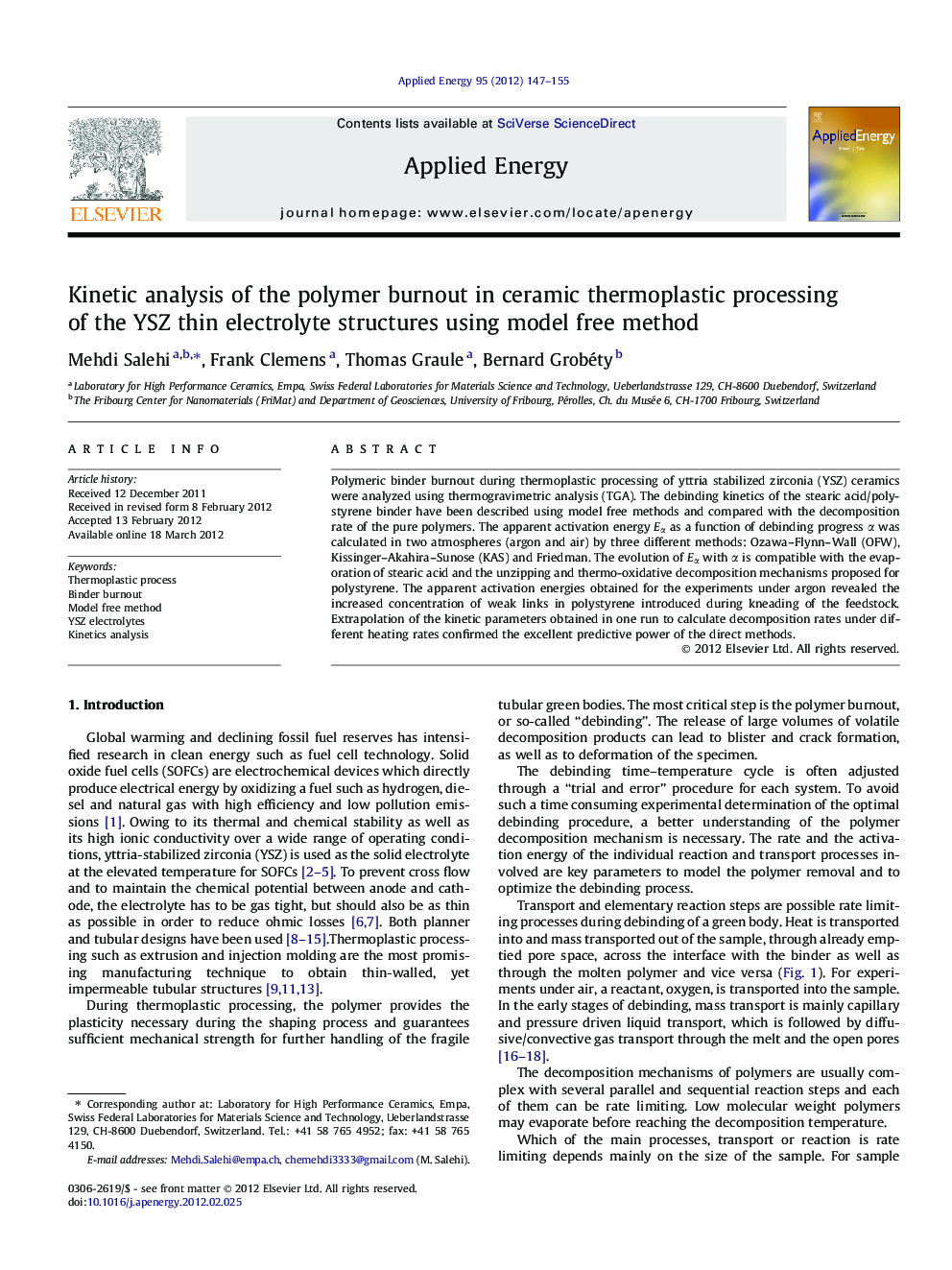| Article ID | Journal | Published Year | Pages | File Type |
|---|---|---|---|---|
| 243684 | Applied Energy | 2012 | 9 Pages |
Polymeric binder burnout during thermoplastic processing of yttria stabilized zirconia (YSZ) ceramics were analyzed using thermogravimetric analysis (TGA). The debinding kinetics of the stearic acid/polystyrene binder have been described using model free methods and compared with the decomposition rate of the pure polymers. The apparent activation energy Eα as a function of debinding progress α was calculated in two atmospheres (argon and air) by three different methods: Ozawa–Flynn–Wall (OFW), Kissinger–Akahira–Sunose (KAS) and Friedman. The evolution of Eα with α is compatible with the evaporation of stearic acid and the unzipping and thermo-oxidative decomposition mechanisms proposed for polystyrene. The apparent activation energies obtained for the experiments under argon revealed the increased concentration of weak links in polystyrene introduced during kneading of the feedstock. Extrapolation of the kinetic parameters obtained in one run to calculate decomposition rates under different heating rates confirmed the excellent predictive power of the direct methods.
Graphical abstractFigure optionsDownload full-size imageDownload as PowerPoint slideHighlights► Kinetics study of the thermal debinding of binder for the YSZ thin electrolyte structures. ► Isoconversional kinetic methods is used to determine the apparent activation energy. ► The predicated data showed excellent agreement with the experimental data.
